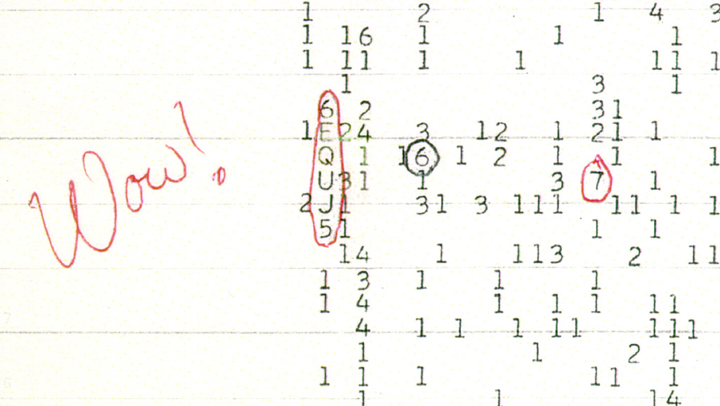TORONTO — Is there anyone out there?

A new research paper is asking whether or not signals from space are coming from E.T. or a natural phenomenon we just don’t understand.
A bit of background: The universe has a lot of powerful and amazing stuff going on. One such thing is called fast radio burst or FRB. These radio signals (think of signals coming across your car radio) are extremely fast, lasting about a millisecond and giving off as much energy as the sun does in a day.
Just this year, one of these FRBs was seen in action for the first time (as opposed to scientists going through data and finding them).
READ MORE: Is anyone out there? Send a message to potential alien life
Astronomers don’t know for sure what causes them, but some suggest that they could be caused by powerful explosions in far-off galaxies or by magnetars, the most magnetic stars known.
But what if it wasn’t from any of those universal phenomenon?
In order to figure out how far these FRBs have travelled, astronomers use something called the dispersion measure (DM). The farther the signal has come, the bigger the DM.
The new research paper found that 10 of these FRBs come in a multiple of 187.5. This would suggest that each one came from separate sources at regularly spaced distances from Earth (we’re talking billions of kilometres away, of course).
And it’s unlikely that it’s a fluke: the paper concludes that there is a 5 in 10,000 probability that the line-up of these signals is coincidental.

Get breaking National news
The authors say that it’s unlikely that the source of these regularly spaced FRBs are from another galaxy as the dust between the distances would mess up that regular spacing. It could be within our own galaxy, but they believe that it would be “most surprising.” They don’t explain why, however.
“If both of these options could be excluded, only an artificial source (human or non-human) must be considered, particularly since most bursts have been observed in only one location,” they concluded.
READ MORE: Water discovered on asteroid points to habitable exoplanets
That’s not to say that they believe FRBs are of extraterrestrial origin. They believe that more research is needed.
In an email to Global News, famed astronomer and the Bernard M. Oliver Chair for SETI, an institute dedicated to the search for life in the universe, Jill Tarter agreed.
There is a precedent for regularly spaced emissions, by the way. Pulsars — rapidly rotating stars — emit regular electromagnetic radiation. It’s kind of like a lighthouse. But they are not as powerful.
And this isn’t the first time we’ve received an interesting signal from space.
In 1977, astronomer Jerry Ehman found the now famous “Wow! signal.”
This powerful signal was picked up by the Big Ear Radio Observatory at Ohio State University — it was off the charts. However, it was never seen again. There is some belief that it was a human-made signal that was accidentally reflected off some space debris.
To help you understand this image, each number on the printout represents the intensity of the signal, from 0 to 35. Anything over 9 gets assigned a letter. And as you can see, there are several letters. The letter U indicates a signal about 30 times greater than any ambient noise of space (yes, space is noisy).
You can now understand why Ehman was so stunned.
So, what does this all mean? Are we getting messages from space?
The jury is out on that. We just don’t have enough of an understanding of what we’re seeing. But it’s probably safe to say you don’t need to put on your tin foil hats just yet.
(An earlier version stated that the galactic signals were billions of light-years away, but it’s actually billions of kilometres away.)







Comments